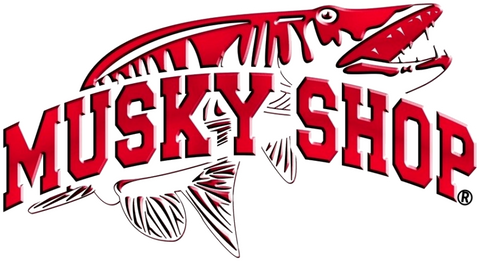Understanding Musky Spawning Patterns

Thoughout the Northwoods musky season might seem miles away, not opening until the tail end of May, many more Southern regions across the country are experiencing the glimpse of Spring muskies, and maybe even netting a few. When you’re the fish of 10,000 casts, your Spring seasonal pattern is not unlike most land animals that hibernate, it’s often a slow, groggy path from Spring spawn to normal Summer behavior. Though some Southern musky grounds offer year-round fishing, the pattern of the musky remains the same due to their spawning process.
As ice melts in the Northern regions and water temperatures begin to rise in Southern waterways, muskies are emerging from their winter haunts and making their way to dedicated spawning grounds that have likely been decided upon for eons. As they travel, they may begin to gather into shallow bays, flats, mouths of tributaries, and weed beds. Sometimes, depending on the waterway, fallen trees, rocky points, or shorelines might be the holding pattern. Regardless, these fish will hold here until the water temperature pushes them on.
When the water temperatures start to rise to the mid to upper 50’s, muskies, through their instinctual call, know where and when it’s time. They typically proceed to soft-bottomed areas, many times with ample aquatic plant life as added protection. Muskies are notable broadcast spawners. This means that neither female nor male tend their eggs after the spawn is complete. They have no instinctual attachment to their offspring who are left to develop alone.
During the spawn, musky behavior has been well documented. Many studies have found that at any pre-determined location, muskies will spread and fertilize eggs for stretches of up to 500 feet. There aren’t any qualifying rules that biologists can understand as far as overall spacing; however, it has been determined that overfertilized eggs (fertilized by more than one male) are unproductive, so their egg spread likely produces greater numbers by adding distance between targets.
Muskies can participate in the spawn for up to 3 weeks. Typically the females' jobs are complete by week two while the males stay longer to ensure they fertilize wide swaths of area. The males will then fall away to their late spring residences as well. When the spawn is finally complete, it goes without saying that muskies are exhausted. This process is long and arduous and takes them much of the spring to recover. Though muskies will disperse from their spawning grounds in search of favorable cover with many of their holding areas being a short distance away.
Post-spawn muskies will travel out of their spawning areas and find shelter in similar shallow areas of cover and structure. Many times the shorelines leading out of spawning grounds will be dotted for miles with recuperating muskies finding respite in downed timber, small bays, deep weeds, and points, staging in search of a caloric uptick utilizing easy prey. As you might gather, this is a great time to seek out your Spring targets.
Post-spawn angling can be as easy as shoreline trolling or jigging/jerking downsized lures. There aren’t any true rules to musky fishing during this time other than downsizing and slowing down a bit to allow muskies a chance when they are worn out from the spawn. Slow cruising rubber or an easy-to-grab topwater is also not out of the question. The most important part is giving muskies a chance to line up and take your bait without being overly aggressive. As you ease into early Summer, muskies will liven up and take burning bucktails, but post-spawn fishing requires a bit more finesse.
Musky fishing musky hunter musky shop musky lures musky on the fly musky fly fishing musky flies musky fever musky addict musky guide musky shop guide service muskie fishing muskie nation muskies Canada Northwoods Wisconsin muskies fishing guides fishing guide service fiske esox pike snoeken rods reels lures baits line leader net tackle box bass panfish Minocqua
